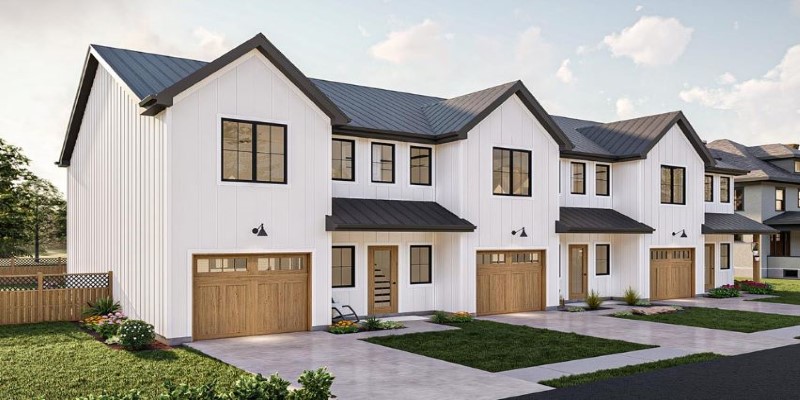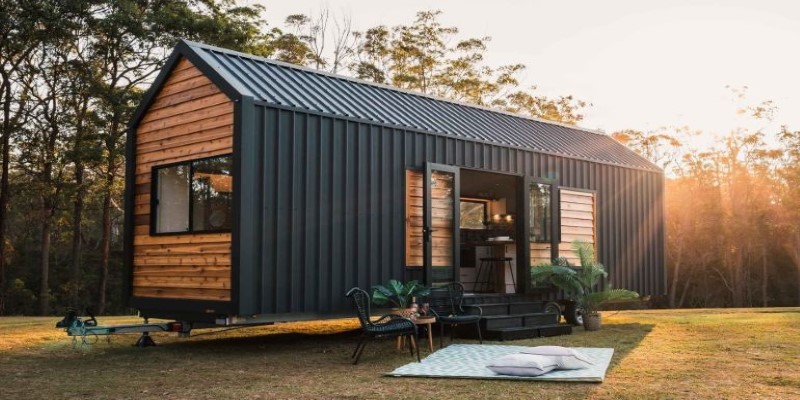Choosing a home involves navigating a wide range of options, from single-family houses to apartments and condos. Each type offers a unique living experience based on lifestyle, space needs, and budget. Some prefer the privacy of detached homes, while others appreciate the convenience of shared amenities in multi-unit buildings. Townhouses and duplexes offer a middle ground, balancing independence with community living.
Financial factors, maintenance responsibilities, and location also play key roles in the decision-making process. By understanding the various types of homes, a person can make informed decisions about whether to buy or rent a house.
Different Types of Homes and Their Unique Features
Let's explore the various residential properties and their defining features, benefits, and challenges to help you choose the right home for your needs.
Single-Family Homes
Single-family homes are self-contained structures built for a single family. They provide seclusion, spacious interiors, and individual yard space, making them suitable for families. Placed primarily in the suburbs, they leave room for personalization but with full maintenance. Landscaping, repairs, and general maintenance are all performed by the owners.
Such houses are typically cherished, and hence, they are good long-term investments. While they provide space and freedom, they might have higher price tags, including their purchasing prices, property taxes, and continuous maintenance bills.
Townhouses
Townhouses are multi-level buildings that share some of the partitions with neighboring buildings. They balance privacy and shared life, normally with little nurseries or patios. Found in urban and suburban areas, they provide more space than apartments while requiring less maintenance than detached houses.

Many townhouses are part of homeowners' associations (HOAs), which handle common area maintenance but impose rules on modifications. They are more affordable than single-family homes but may come with monthly HOA fees. Their structure makes them a great choice for families and individuals who prefer compact yet spacious living.
Apartments
Apartments are self-contained living spaces within larger buildings, typically rented rather than owned. They offer convenience with amenities such as security, parking, and recreational areas. Located in city centers and suburban developments, they appeal to people seeking affordability and low-maintenance living.
However, they come with limitations such as space constraints, shared walls, and landlord rules. Renters don’t build equity, but apartments provide flexibility, making them ideal for those who relocate frequently. The trade-off is reduced privacy and the inability to customize or renovate the living space.
Condominiums (Condos)
Condos resemble apartments but are owned instead of rented. They provide homeownership with shared amenities like pools, gyms, and maintenance services. Condo owners pay association fees for building upkeep, which reduces personal maintenance responsibilities. However, they must comply with homeowners’ association (HOA) rules.
Located in urban and suburban areas, condos are popular among individuals and couples who prefer a community setting. They typically cost less than single-family homes but offer less independence due to association regulations. They are a great choice for those wanting ownership without full maintenance responsibilities.
Duplexes and Triplexes
Duplexes and triplexes are multi-unit homes with two or three separate living spaces. Each unit has its entrance, making it appealing for families, investors, and those seeking rental income. Owners can live in one unit while renting out the others, helping cover mortgage costs.
These properties provide more privacy than apartments while maintaining some of the benefits of communal living. They are typically found in both urban and suburban areas. The downside is shared maintenance responsibilities, and tenants may affect the overall living experience for owner-occupants.
Mobile Homes
Mobile homes, also known as manufactured homes, are prefabricated structures that can be placed on private land or in designated communities. They are an affordable alternative to traditional housing, providing flexibility for homeowners. Unlike traditional homes, mobile homes often depreciate over time, which can impact long-term investment potential.
However, they require less maintenance and offer a cost-effective way to achieve homeownership. While some mobile homes are permanently installed, others remain movable, offering flexibility for those who may need to relocate. Zoning restrictions and financing limitations can be challenges for potential buyers.
Tiny Homes
Tiny homes are compact, often mobile residences that focus on minimalism and efficiency. Ranging from 100 to 400 square feet, they emphasize simplicity, sustainability, and affordability. Many tiny homes are custom-built and equipped with smart storage solutions to maximize space.

Their lower cost makes homeownership more accessible, but zoning laws often restrict their placement. Despite their appeal, tiny homes require significant downsizing, which may not suit everyone. They are ideal for those who value a minimalist lifestyle, reduced environmental impact, and financial freedom over large living spaces.
Co-Op Housing
Cooperative housing, or co-ops, is a form of shared ownership where residents own shares in a corporation that manages the building. Unlike condos, individuals don’t own their units but have exclusive rights to live in them. Co-ops require board approval for purchases and impose strict rules on subleasing and renovations.
They tend to be more affordable than condos but come with financial and lifestyle restrictions. Found mainly in urban settings, co-ops appeal to long-term residents seeking stability. However, their limited flexibility makes them less attractive to buyers who prefer complete ownership control.
Multifamily Homes
Multifamily homes, which range from duplexes to large apartment complexes, contain multiple separate living units within one building. Owners can live in one unit while renting out others for income.
Found mainly in urban areas, they offer investment potential but require property management. While they generate rental revenue, they also come with maintenance responsibilities, making them ideal for those balancing homeownership with landlord duties.
Conclusion
Choosing a home depends on individual needs, lifestyle, and financial goals. Single-family homes offer space and privacy, while townhouses and condos provide shared amenities with less maintenance. Apartments and co-ops suit those seeking affordability and convenience, while duplexes offer rental income opportunities. Mobile homes and tiny homes appeal to those prioritizing affordability and flexibility. Each type of home comes with trade-offs, from maintenance responsibilities to cost and customization options. Understanding the different types of homes allows buyers and renters to make informed decisions that align with their long-term housing goals.












